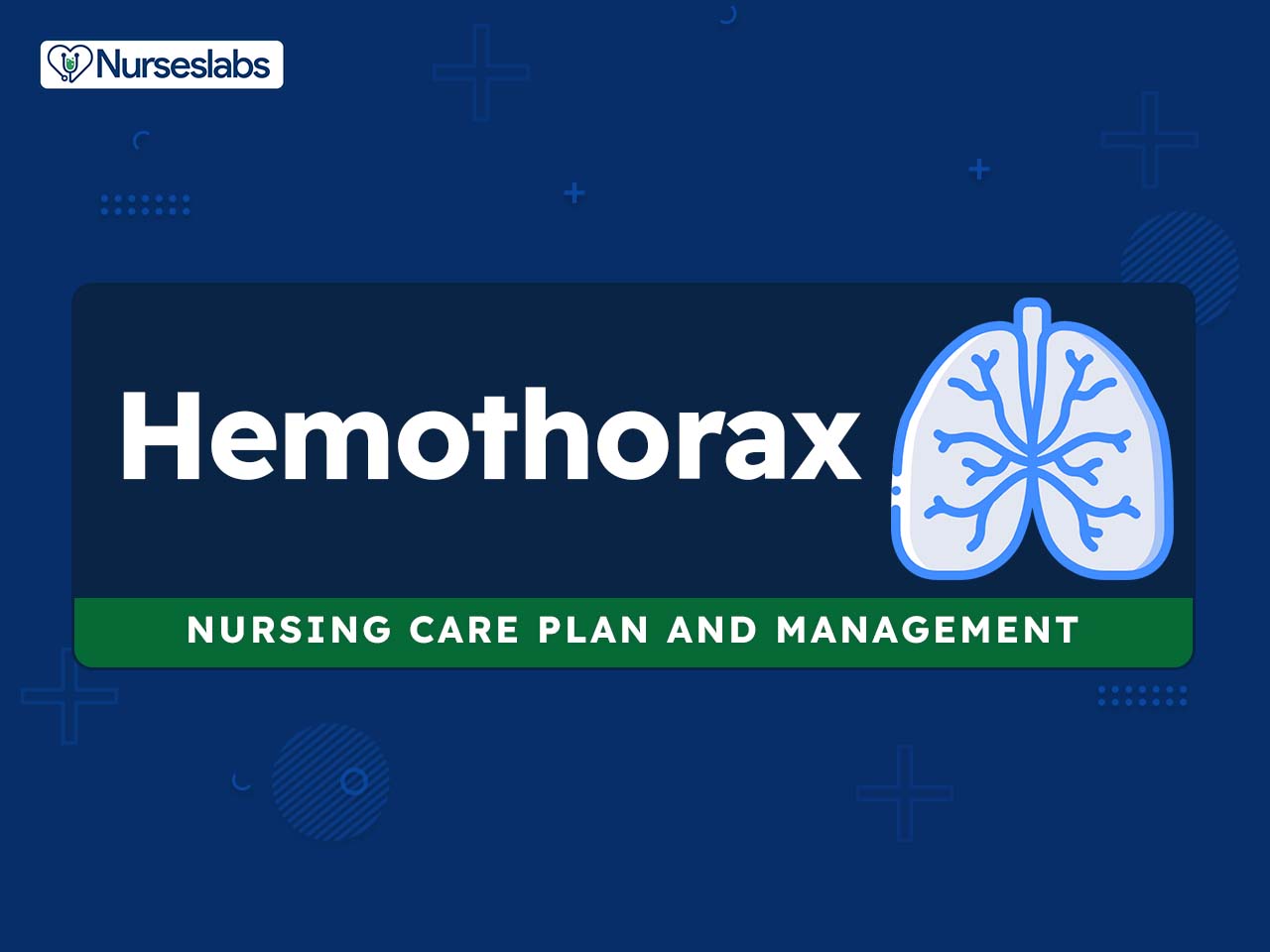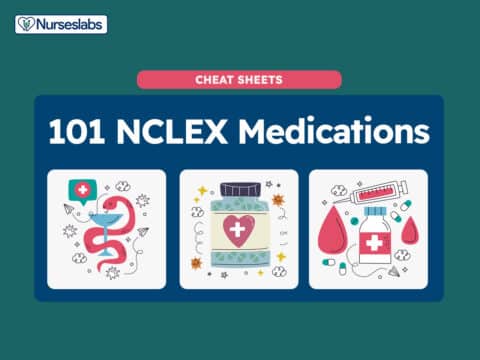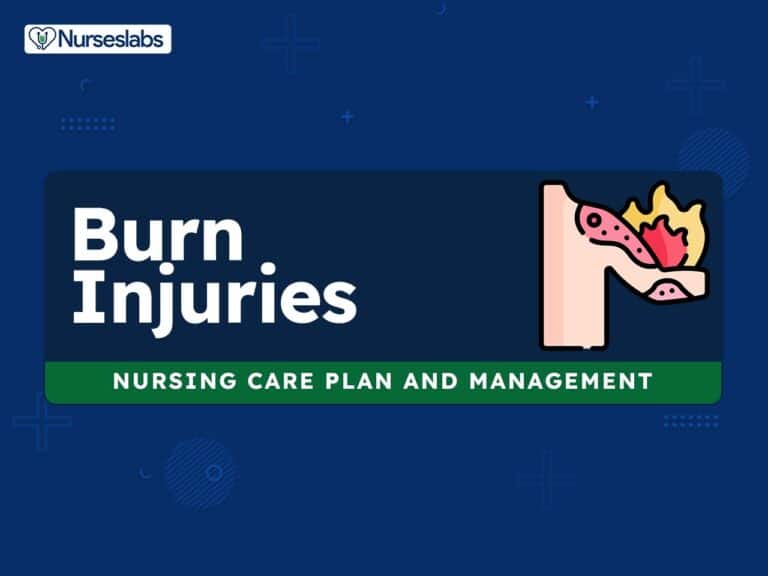Optimize patient care with this nursing care plan and management guide tailored to assist patients with hemothorax and pneumothorax. Immerse yourself in a wealth of knowledge encompassing nursing assessment techniques, evidence-based nursing interventions, achievable goals, and precise nursing diagnoses specifically curated for individuals facing hemothorax and pneumothorax.
What is Hemothorax and Pneumothorax?
Hemothorax is the presence of blood in the pleural space. The source of blood may be the chest wall, lung parenchyma, heart, or great vessels. Hemothorax is usually a consequence of blunt or penetrating trauma. Much less commonly, it may be a complication of the disease, may be iatrogenically induced, or may develop spontaneously (Mancini & Milliken, 2022).
Pneumothorax occurs when the parietal or visceral pleura is breached and the pleural space is exposed to positive atmospheric pressure. Typically, the pressure in the pleural space is negative or subatmospheric; this negative pressure is required to maintain lung inflation. When either pleura is breached, air enters the pleural space, and the lung or a portion of it collapses.
Types of pneumothorax include simple, traumatic, and tension pneumothorax.
- Simple pneumothorax. A simple, or spontaneous, pneumothorax occurs when air enters the pleural space through a breach of either the parietal or visceral pleura. Most commonly, this occurs as air enters the pleural space through the rupture of a bleb or a bronchopleural fistula.
- Traumatic pneumothorax. Traumatic pneumothorax occurs when air escapes from a laceration in the lung itself and enters the pleural space or from a wound in the chest wall. It may result from blunt trauma, penetrating chest or abdominal trauma, or diaphragmatic tears.
- Tension pneumothorax. Tension pneumothorax occurs when air is drawn into the pleural space from a lacerated lung or through a small opening or wound in the chest wall. It may be a complication of other types of pneumothorax. The air that enters the chest cavity with each inspiration is trapped; it cannot be expelled during expiration through the air passages or the opening in the chest wall.
Nursing Care Plans and Management
Nursing care planning management for patients with hemothorax and pneumothorax may include:
1. Hemothorax: Nursing interventions may focus on promoting respiratory function and preventing complications. This may involve monitoring vital signs, oxygen saturation, and breath sounds, providing oxygen therapy, assisting with chest tube insertion and drainage, administering pain medication, and assessing for signs of shock or bleeding.
2. Pneumothorax: Nursing interventions aim to relieve the pneumothorax, promote lung re-expansion, and prevent complications. This may involve assisting with chest tube insertion and monitoring chest tube drainage, assessing respiratory status, providing oxygen therapy, monitoring vital signs, administering pain medication, promoting mobility and deep breathing exercises, and educating the patient on signs of recurrence or complications.
Nursing Problem Priorities
The following are the nursing priorities for patients with hemothorax and pneumothorax:
- Maintaining airway patency and adequate ventilation
- Assess and manage pain effectively
- Provide wound care and monitor for signs of infection
- Preventing and monitoring for potential complications
- Provide information about the disease process/prognosis and treatment regimen.
Nursing Assessment
The signs and symptoms associated with pneumothorax depend on its size and cause. Pain is usually sudden and may be pleuritic. The client may have only minimal respiratory distress with slight chest discomfort and tachypnea with a small simple or uncomplicated pneumothorax. If the pneumothorax is large and the lung collapse totally, acute respiratory distress occurs. In hemothorax, tachypnea is also common; shallow breaths may be noted. There are diminished ipsilateral breath sounds upon auscultation and a dull percussion note. If substantial systemic blood loss has occurred, hypotension and tachycardia are present. Respiratory distress reflects both pulmonary compromise and hemorrhagic shock.
Assess for the following subjective and objective data:
- Hemothorax
- Shortness of breath
- Difficulty breathing
- Sharp or stabbing chest pain, or chest heaviness
- Decreased breath sounds on the affected side
- Dullness to percussion both anteriorly and posteriorly on the left (presence of fluid)
- Decreased oxygen saturation levels
- Signs of shock, including hypotension, tachycardia, rapid weak pulse, and pale, clammy skin
- Pneumothorax
- Sudden, sharp chest pain
- Shortness of breath
- Decreased or absent breath sounds on auscultation
- Hyperresonant on percussion (presence of air)
- Asymmetrical chest movement
- Cyanosis, abnormal ABGs
- Jugular vein distention (tension pneumothorax)
Assess for factors related to the cause of hemothorax and pneumothorax:
- Decreased lung expansion (air/fluid accumulation)
- Musculoskeletal impairment
- Inflammatory process
- Malfunction of the chest drainage system
- Concurrent disease/injury process
- Dependence on an external device (chest drainage system)
- Lack of safety education/precautions
- Ventilation-perfusion mismatch
- Alveolar-capillary membrane changes
- Impaired pleural integrity
- Inflammation
- Presence of a chest tube
- Surgical intervention (thoracotomy)
Nursing Diagnosis
Following a thorough assessment, a nursing diagnosis is formulated to specifically address the challenges associated with hemothorax and pneumothorax based on the nurse’s clinical judgement and understanding of the patient’s unique health condition. While nursing diagnoses serve as a framework for organizing care, their usefulness may vary in different clinical situations. In real-life clinical settings, it is important to note that the use of specific nursing diagnostic labels may not be as prominent or commonly utilized as other components of the care plan. It is ultimately the nurse’s clinical expertise and judgment that shape the care plan to meet the unique needs of each patient, prioritizing their health concerns and priorities.
Nursing Goals
Goals and expected outcomes may include:
- The client will establish a normal/effective respiratory pattern with ABGs within the client’s normal range.
- The client will be free of cyanosis and other signs/symptoms of hypoxia.
- The client’s lung expansion will be noted on the chest x-ray.
- The client will exhibit adequate gas exchange and ventilatory function as evidenced by a normal respiratory rate, absence of significant mental status changes, and orientation to person, place, and time.
Nursing Interventions and Actions
For patients with hemothorax and pneumothorax, nursing interventions primarily revolve around optimizing respiratory function, preventing complications, and facilitating recovery. These interventions encompass monitoring vital signs, oxygen saturation, and breath sounds, administering oxygen therapy, assisting with chest tube insertion and drainage, evaluating pain levels and administering appropriate medication, assessing for signs of shock or bleeding, monitoring chest tube drainage, assessing respiratory status, promoting mobility and deep breathing exercises, and educating patients on recognizing signs of recurrence or potential complications. The collective goal is to ensure optimal lung re-expansion and relieve pneumothorax. Therapeutic interventions and nursing actions for patients with hemothorax and pneumothorax include:
1. Improving Breathing Pattern
In normal respiration, the pleural space has a negative pressure. As the chest wall expands outward, the surface tension between the parietal and visceral pleura expands the lung outward. The lung tissue intrinsically has an elastic recoil, tending to collapse inwards. If the pleural space is invaded by gas from a ruptured bleb, the lung collapses until equilibrium is achieved or the rupture is sealed. As the pneumothorax enlarges, the lung becomes smaller. The main physiologic consequence of this process is a decrease in vital capacity and partial pressure of oxygen (Daley & Mancini, 2022).
1. Determine etiology and precipitating factors (spontaneous collapse, trauma, malignancy, infection, complication of mechanical ventilation).
Understanding the cause of lung collapse is necessary for proper chest tube placement and the choice of other therapeutic measures. Selection among the various management options requires an understanding of the natural history of the pneumothorax, the risk of recurrent pneumothorax, and the benefits and limitations of each treatment option and a discussion with the client (Daley & Mancini, 2022).
2. Assess respiratory function, noting rapid or shallow respirations, dyspnea, reports of “air hunger,” development of cyanosis, and changes in vital signs.
Respiratory distress and changes in vital signs may occur due to physiological stress and pain or may indicate the development of shock due to hypoxia or hemorrhage. Shortness of breath or dyspnea in primary spontaneous pneumothorax is generally sudden in onset and tends to be more severe with secondary spontaneous pneumothorax because of decreased lung reserve (Daley & Mancini, 2022).
3. Observe a synchronous respiratory pattern when using a mechanical ventilator. Note changes in airway pressures.
Difficulty breathing “with” the ventilator and increasing airway pressures suggests worsening of the condition or development of complications (spontaneous rupture of a bleb creating a new pneumothorax). High pressures and air trapping place the client at risk for tension pneumothorax if the thoracostomy is not functioning (Daley & Mancini, 2022).
4. Auscultate breath sounds.
Breath sounds may be diminished or absent in a lobe, lung segment, or entire lung field (unilateral). The atelectatic area will have no breath sounds, and partially collapsed areas have decreased sounds. The regularly scheduled evaluation also helps determine areas of good air exchange and provides a baseline to evaluate the resolution of pneumothorax.
5. Note chest excursion and position of the trachea.
Chest excursion is unequal until the lung re-expands. The trachea deviates away from the affected side with tension pneumothorax. When examining a client for suspected tension pneumothorax, any clue may be helpful, as subtle thoracic size and thoracic mobility differences may be elicited by performing careful visual inspection along the line of the thorax. In a supine client, the nurse should lower themselves to be on a level with the client (Daley & Mancini, 2022).
6. Assess for fremitus.
Voice and tactile fremitus (vibration) are reduced in fluid-filled or consolidated tissue. Air or fluid accumulates in the potential space between the chest wall and lung parenchyma, decreasing the transmission of lower-frequency sound vibrations (Modi, 2022).
7. Assess the client’s mental and cardiac status at frequent intervals.
This assessment monitors the client’s status while the chest drainage system is in place. The purpose of a chest drainage system is to drain air or fluid and re-expand the lung. Tachycardia, restlessness, anxiety, and changes in mental status are signs of respiratory distress that may occur due to chest drainage system malfunction.
8. Assist the client with splinting painful areas when coughing and deep breathing.
Supporting chest and abdominal muscles make coughing more effective and less traumatic. The client may be instructed to use a towel pad to support the chest while coughing, sneezing, laughing, etc (Bhagwani et al., 2022).
9. Maintain a position of comfort, usually with the head of the bed elevated. Turn to the affected side. Encourage the client to sit up as much as possible.
This promotes maximal inspiration; enhances lung expansion and ventilation on the unaffected side. The client may be positioned in a semi-Fowler or sitting position to decrease the work of breathing.
10. Maintain a calm attitude, assisting the client to “take control” by using slower and deeper respirations.
This assists the client in dealing with the physiological effects of hypoxia, which may be manifested as anxiety or fear. The pain and fear associated with a pneumothorax contribute to the overall stress level of the client, and the nurse’s calm demeanor can influence the client’s state of mind.
2. Managing Care for Patients with Chest Tube
The management of pneumothorax involves inserting a chest tube to evacuate air or blood from the pleural space. In emergency cases, immediate needle decompression may be necessary. Chest tube drainage and suction are used to re-expand the lung and remove remaining air or fluid. Surgical intervention may be needed for prolonged air leaks.
Once the chest tube is inserted:
1. Determine if a dry seal chest drain or water seal system is used.
This maintains prescribed intrapleural negativity, which promotes optimal lung expansion and fluid drainage. Note: Dry-seal setups are also used with an automatic control valve (AVC), which provides a one-way valve seal similar to that achieved with the water-seal system. The water seal chamber acts as a one-way valve allowing air to escape from gravity, but not to re-enter the thoracic cavity (Ravi & McKnight, 2022).
2. Check the suction control chamber for the correct amount of suction (determined by water level, wall, or table regulator at the correct setting;
Water in a sealed chamber serves as a barrier that prevents atmospheric air from entering the pleural space should the suction source be disconnected, and aids in evaluating whether the chest drainage system is functioning appropriately. Note: Underfilling the water-seal chamber exposes it to air, putting the client at risk for pneumothorax or tension pneumothorax. Overfilling (a more common mistake) prevents air from easily exiting the pleural space, thus preventing the resolution of pneumothorax or tension pneumothorax.
Monitor fluid level in the water-seal chamber; maintain at the prescribed level:
3. Maintain fluid in the water-seal chamber and suction chamber at appropriate levels.
Many closed systems come pre-filled with water. Otherwise, the suction apparatus does not regulate the amount of suction applied to the closest chest drainage system. The amount of suction is determined by the water level in the suction control chamber.
4. Dial the level of dry suction per the healthcare provider’s recommendation.
This action maintains air and fluid removal from the pleural space. Suction aids in lung re-expansion, but removing suction for short periods, such as transporting, will not be detrimental or disrupt the closed chest drainage system.
5. Observe the water-seal chamber bubbling
Bubbling during expiration reflects the venting of pneumothorax (the desired action). Bubbling usually decreases as the lung expands or may occur only during expiration or coughing as the pleural space diminishes. The absence of bubbling may indicate complete lung re-expansion (normal) or represent complications such as obstruction in the tube.
6. Observe for abnormal and continuous water-seal chamber bubbling
With suction applied, this indicates a persistent air leak that may be from a large pneumothorax at the chest insertion site (client-centered) or chest drainage unit (system-centered). Most intrathoracic air leaks will usually seal spontaneously, and resolution can be tracked by witnessing decreased bubbling in the device over days. Larger air leaks, such as those caused by bronchopleural fistulas, may require surgical intervention (Merkle & Cindass, 2022).
7. Know the location of the air leak (client- or system-centered) by clamping of the thoracic catheter just distal to exit from the chest.
If bubbling stops when the catheter is clamped at the insertion site, the leak is client-centered (at the insertion site or within the client). Should the presence of an air leak continue after the client has been isolated from the circuit, it is incumbent on the provider to work in a stepwise fashion to determine which section of the circuit has the air leak (Merkle & Cindass, 2022).
8. Place petrolatum gauze and other appropriate material around the insertion as indicated.
This usually corrects insertion site air leaks. A petrolatum gauze pad is applied over the insertion site if the chest tube becomes dislodged. The use of this dressing provides an airtight seal to prevent recurrent pneumothorax.
9. Clamp tubing in a stepwise fashion downward toward the drainage unit if the air leak continues
Clamping downward isolates the location of a system-centered air leak. Note: Information indicates that clamping for a suspected leak may be the only time that the chest tube should be clamped. Often the evaluation will begin at the chest tube insertion site to assess if there is atmospheric air tracking into the thoracic space via the chest tube insertion site. Clamping of the tube should occur very briefly or the tube can be mechanically occluded to determine if an ongoing air leak is downstream from the client (Merkle & Cindass, 2022).
10. Seal drainage tubing connection sites securely with lengthwise tape or bands according to the established policy
This prevents and corrects air leaks at connector sites. Tape all connections and secure the chest tube to the thorax with tape or other securement devices. These actions help maintain a closed chest drainage system and facilitate drainage.
11. Monitor water-seal chamber “tidaling.” Note whether the change is transient or permanent
The water-seal chamber serves as an intrapleural manometer (gauges intrapleural pressure); therefore, fluctuation (tidaling) reflects pressure differences between inspiration and expiration. Tidaling of the chest tube, when the fluid in the chamber or along a dependent portion of the tubing is seen to move back and forth with respiration, is a sign that a patent chest tube is affected by the negative pressure created by the diaphragm (Merkle & Cindass, 2022). Tidaling of two to six centimeters during inspiration is normal and may increase briefly during coughing episodes. The continuation of excessive tidal fluctuations may indicate the existence of airway obstruction or the presence of a large pneumothorax.
12. Position drainage system tubing for an optimal function like shortening the tubing or coiling the extra tubing on the bed, ensuring the tubing is not kinked or hanging below the entrance to the drainage container. Drain accumulated fluid as necessary.
Improper position, kinking, or accumulation of clots or fluid in the tubing changes the desired negative pressure and impedes air or fluid evacuation. Ensure that the bed and equipment are not compressing any system component. These actions help maintain the chest drainage system and facilitate drainage. Note: If a dependent loop in the drainage tube cannot be avoided, lifting and draining it every 15 minutes will maintain adequate drainage in the presence of a hemothorax.
13. Assess the amount of chest tube drainage, noting whether the tube is warm and full of blood and bloody fluid level in the water-seal bottle is rising.
This is useful in evaluating the resolution of pneumothorax and the development of hemorrhage requiring prompt intervention. Note: Some drainage systems are equipped with an autotransfusion device, which allows for the salvage of shed blood. One low-cost option is to utilize simple underwater drainage bottles connected to a chest tube to collect blood from an acute hemothorax and then salvage the blood for re-infusion via an empty saline bag (Hardcastle, 2021).
14. Evaluate the need for tube stripping (“milking”).
Although routine stripping is not recommended, it may be necessary occasionally to maintain drainage in the presence of fresh bleeding, large blood clots, or purulent exudate (empyema). Should the healthcare provider request line stripping, the procedure is accomplished by first securing the tube at the incision site with a hand to prevent accidental dislodgement during the procedure. The tube is then pinched and “milked” away from the client. Using an alcohol wipe will provide helpful lubrication while sliding fingers along the tube. An alternative is to use two pens that are held together in one hand to provide occlusion of the line (Merkle & Cindass, 2022).
15. Strip tubes carefully per protocol, in a manner that minimizes excess negative pressure.
Stripping is usually uncomfortable for the client because of the change in intrathoracic pressure, which may induce coughing or chest discomfort. Vigorous stripping can create very high intrathoracic suction pressure, which can be injurious (invagination of tissue into catheter eyelets, the collapse of tissues around the catheter, and bleeding from the rupture of small blood vessels). Creating high negative pressures in the pleural space may also damage fragile lung tissue. Stripping must be avoided as much as possible and should not be performed without orders from the healthcare provider.
If the thoracic catheter is disconnected or dislodged:
16. Observe for signs of respiratory distress. If possible, reconnect the thoracic catheter to tubing or suction, using a clean technique. If the catheter is dislodged from the chest, cover it at the insertion site immediately with petrolatum dressing and apply firm pressure. Notify the healthcare provider at once.
Pneumothorax may recur, requiring prompt intervention to prevent fatal pulmonary and circulatory impairment. Submerging the chest tube in a bottle of sterile water if it becomes disconnected from the water-seal system provides for a temporary closed-chest drainage system.
After the thoracic catheter is removed:
17. Cover the insertion site with a sterile occlusive dressing. Observe for signs and symptoms that may indicate recurrence of pneumothorax (shortness of breath, reports of pain. Inspect the insertion site, note the character of drainage).
Early detection of a developing complication is essential (recurrence of pneumothorax, presence of infection). One method is to cover the tube site with an occlusive dressing such as petroleum-impregnated gauze. Another method is to tie the suture, which was securing the tube close to the wound (Merkle & Cindass, 2022).
18. Review serial chest x-rays.
Chest x-rays monitor the progress of resolving hemothorax or pneumothorax and re-expansion of the lung. It can also identify malposition of the endotracheal tube (ET), affecting lung re-expansion. If conservative management of retained collections is chosen, serial chest x-rays should be obtained to ensure that resolution is occurring (Mancini & Milliken, 2022).
19. Monitor and graph serial ABGs and pulse oximetry. Review vital capacity and tidal volume measurements.
This assesses the status of gas exchange and ventilation and the need for continuation or alterations in therapy. ABG studies measure the degrees of acidemia, hypercarbia, and hypoxemia, the occurrence of which depends on the extent of cardiopulmonary compromise at the time of collection (Daley & Mancini, 2022).
20. Administer supplemental oxygen via cannula, mask, or mechanical ventilation as indicated.
Oxygen aids in reducing the work of breathing; promotes relief of respiratory distress and cyanosis associated with hypoxemia. However, oxygen administration at 3L/minute nasal cannula or higher flow treats possible hypoxemia and is associated with a fourfold increase in the rate of pleural air absorption compared with room air alone (Daley & Mancini, 2022).
21. Assist with and prepare for reinflation procedures, such as simple aspiration, Heimlich valve, and chest tube placement with chest tube drainage.
Simple aspiration in 131 cases of small spontaneous pneumothorax yielded successful results up to 87%. A subsequent ED study found needle aspiration to be as safe and effective as chest tube placement for PSP, conferring the additional benefits of shorter lengths of stay and fewer hospital admissions. A Heimlich valve is a one-way rubber flutter valve that allows complete evacuation of air that is not under tension. Chest tube placement occurs when a tube inserted into the pleural space is connected to a device with a one-way flow for air removal (Daley & Mancini, 2022).
3. Promoting Effective Gas Exchange
In tension pneumothorax, an injured tissue forms a one-way valve, allowing air inflow with inhalation into the pleural space and prohibiting outflow. The volume of this non-absorbable intrapleural air increases with each inspiration. As the pressure increases, the ipsilateral lung collapses and causes hypoxia. Hypoxia results as the collapsed lung on the affected side and the compressed lung on the contralateral side compromise effective gas exchange (Daley & Mancini, 2022).
1. Assess for signs and symptoms of hypoxia.
Increased restlessness, anxiety, tachycardia, and changes in mental status are early indicators of hypoxia and can signal impending respiratory compromise, which would necessitate prompt intervention.
3. Monitor ABG results and oxygen saturation levels.
These assessments detect decreasing PaO2 or O2 saturation and increasing PaCO2, which can signal impending respiratory failure. ABG analysis may be useful in evaluating hypoxia and hypercarbia, and respiratory acidosis (Daley & Mancini, 2022).
4. Assess vital signs and breath sounds every two hours or as indicated.
These assessments monitor client trends. Significant changes such as tachycardia, tachypnea, and unilateral decreased breath sound signal a worsening or unresolved condition. Tachycardia, along with tachypnea, is a compensatory mechanism that occurs due to hypoxia or hypoxemia. Tachycardia and hypotension are indicators of shock.
5. Auscultate breath sounds.
The findings on lung auscultation also vary depending on the extent of the pneumothorax. Unilaterally decreased or absent lung sounds are common findings but decreased air entry may be absent even in an advanced state of the disease (Daley & Mancini, 2022).
6. Assess for a declining level of consciousness.
Affected clients may reveal altered mental status changes, including decreased alertness and/or consciousness. These manifestations may signal a severe acidotic state, which requires immediate attention.
7. After chest tube insertion, assess the client every 15 minutes until stable.
These assessments enable prompt detection of respiratory distress for timely intervention, including tachypnea, diminished or absent movement of the chest wall on the affected side, paradoxical movement of the chest wall, increased work of breathing, use of accessory muscles of respiration, complaints of increased dyspnea, unilateral diminished breath sounds, and cyanosis.
8. Arrange the client in an optimal position, such as a semi-Fowler position.
This position provides comfort and enables full expansion of the unaffected lung, adequate expansion of the chest wall, and descent of the diaphragm. If the client has chest tube placement, keep the client in a propped-up position. The semi-Fowler is useful for evacuating air in pneumothorax. The high-Fowler position is useful for draining fluid in hemothorax (Chotai & Mosenifar, 2022).
9. Encourage or assist the client in changing positions every two hours.
This intervention promotes drainage and lung re-expansion and facilitates alveolar perfusion. The client’s collection chamber should be kept below the client’s chest at all times to prevent fluid from being siphoned into the pleural space. Advise the client to be aware of the drainage tubing and bottles when changing positions.
10. Encourage the client to perform deep breathing exercises and splint the thoracotomy site with arms, a pillow, or folded blanket.
Deep breathing exercises promote full lung expansion and decrease the risk of atelectasis. Analgesia and splinting decrease discomfort during deep breathing exercises. Coughing facilitates the mobilization of tracheobronchial secretions if present.
11. Provide a low-carbohydrate, high-fat diet as appropriate.
This diet helps reduce CO2 production and improves respiratory muscle function and metabolic homeostasis. A diet high in sodium and animal protein can increase acidosis. An increased intake of vegetables and fruits and a moderation of salt can also improve acidosis.
12. Administer humidified supplemental oxygen as indicated.
This intervention ensures adequate oxygen levels if the client has hypoxemia, which is likely to be present if the pneumothorax or hemothorax is large. Humidity minimizes convective losses of moisture.
13. Refer for or assist in pulmonary rehabilitation, as indicated.
This provides restorative and preventative care to reverse respiratory acidosis. Examples are bronchial hygiene, breathing retraining, and exercise conditioning. Therapy modalities and length of intervention may vary depending on the severity of respiratory acidosis.
4. Managing Pain and Discomfort
The focus of pain management for patients with hemothorax and pneumothorax is to provide comfort and facilitate adequate respiratory function. The primary goal is to provide effective pain relief through the use of appropriate analgesic medications, considering the severity of pain and the individual patient’s needs. Close monitoring of pain levels and adjusting the pain management plan accordingly is crucial to ensure optimal pain control and patient comfort.
1. Assess the client’s level of pain frequently. Use a self-report pain scale.
These assessments monitor the client’s trend of pain and help determine the success of subsequent pain interventions. Because of the rich innervation of the pleura, chest tube placement is painful; significant analgesia is usually required.
2. Observe verbal and nonverbal cues of pain.
A discrepancy between verbal and nonverbal cues may provide clues to the degree of pain and the need for and effectiveness of interventions. The chest pain is described as severe and/or stabbing, radiates to the ipsilateral shoulder, and increases with inspiration (pleuritic) (Daley & Mancini, 2022).
3. Assess for possible pathophysiological and psychological causes of pain.
Fear, distress, and anxiety over surgical procedures may impair the ability to cope. Additionally, the presence of a chest tube can greatly increase the discomfort. Clients taking opioids preoperatively have a tolerance and will not benefit from opioids postoperatively to the same degree as opioid-naive clients (Marshall & McLaughlin, 2020).
4. Evaluate the effectiveness of pain control.
Pain perception and pain relief are subjective, thus pain management is best left to the client’s discretion. If the client is unable to provide input, the nurse should observe physiological and nonverbal signs of pain and administer medications regularly.
5. Encourage the client to verbalize feelings about pain.
Fears and concerns can increase muscle tension and lower the threshold of pain perception. Some clients may not be willing to verbalize their pain and receive pain medications readily for fear of becoming dependent on the drug.
6. Encourage the client to request analgesics before the pain becomes severe.
Prolonged stimulation of pain receptors results in increased sensitivity to painful stimuli and increases the amount of analgesia required to relieve pain.
7. Educate the client about the benefits of splinting the affected side when coughing, moving, or repositioning.
This action reduces discomfort and promotes adherence to the treatment plan. Coughing uses abdominal and accessory respiratory muscles, which may have been cut during surgery. Splinting supports the incision and surrounding tissues and reduces pain during coughing.
8. Premedicate the client 30 minutes before initial coughing, exercising, repositioning, or before pleurodesis.
This intervention provides comfort during painful exercises and repositioning and facilitating compliance. Chemical pleurodesis is extremely painful and requires diligent pain management. Pleurodesis decreases the chance of pneumothorax recurrence and should be performed in consultation with the surgeon (Daley & Mancini, 2022).
9. Schedule the client’s rest and sleep periods and activities.
Relaxation and rest decrease oxygen demand and may decrease the level of pain. Providing a quiet environment also decreases fatigue and conserves energy from becoming overstimulated. This can enhance coping.
10. Stabilize the chest tube with tape or a securement device to the thorax. Ensure that there are no dependent loops.
These actions reduce pull or drag on the latex connector tubing, prevent discomfort, and facilitate drainage and appropriate functioning. The cross method of taping is recommended because it can provide a strong connection and creates a window, making the connection easily visualized during nursing care (Pat Li et al., 2014).
11. Assist with self-care activities, arm exercises, and ambulation.
Helping the client with these activities prevents undue fatigue and incisional strain. Encouragement and physical assistance, and support may be needed for some time before the client is able or confident enough to perform these activities because of pain or fear of pain
12. Administer pain medications as prescribed.
See Pharmacologic Management
5. Preventing Respiratory Trauma and Infection
Although chest tube application is relatively simple compared to other major surgical procedures, it also brings serious complications between insertion and removal. These complications include misplacement of the tube, damage to adjacent organs, subcutaneous empyema, infections, and bleeding, especially due to trocar chest tube applications. Nurses are the people who spend the most time with the client, ensure continuity in client care and follow-up, and are primarily responsible for the protection and development of health (Seyma et al., 2021).
1. Identify changes or situations that should be reported to caregivers, such as a change in the sound of bubbling, sudden “air hunger”, chest pain, and disconnection of equipment.
Timely intervention may prevent serious complications. An air leak presents as small air bubbles; the amount of bubbling indicates the degree of the leak. Leaks can occur outside the client’s body or within the client. Use a pulse oximeter to measure oxygen saturation levels after an accidental removal of the chest tube to determine respiratory compromise.
2. Observe the thoracic insertion site, noting the condition of skin, presence, and characteristics of drainage from around the catheter. Change or reapply sterile occlusive dressing as needed.
This provides for early recognition and treatment of developing skin or tissue erosion or infection. The dressing must always be clean and intact. Small amounts of ooze can be a normal presentation post-operatively; however, if any abnormal presentations are observed, such as fever and tenderness at the site, consider taking and sending swabs and taking a clinical photo of it (The Royal Children’s Hospital Melbourne, 2022).
3. Observe for signs of respiratory distress if the thoracic catheter is disconnected or dislodged.
Pneumothorax may recur or worsen, compromising respiratory function and requiring emergency intervention. Accidental disconnection and malpositioning of Heimlich valves can complicate an attempted outpatient treatment of pneumothorax. A worsening pneumothorax can allow air into the intrapleural space and prevent its escape, causing a mediastinal shift, pulmonary shunting, and circulatory collapse (Daley & Mancini, 2022).
4. Assess for the presence of pain.
Pain assessment should be conducted and documented every four hours unless more frequently wanted. The client must have appropriate and regular pain relief, and referral for the administration of pain relief prior to mobilization, physiotherapy sessions, and other activities that involve movement must be secured (The Royal Children’s Hospital Melbourne, 2022).
5. Assess the color and consistency of the drainage.
Color and consistency of the drainage should be documented hourly along with the documentation of volume amount. If there are changes such as a hemoserous drainage, bright red serous drainage, or creamy drainage, the healthcare provider must be notified immediately.
6. Check for the necessity of suction pressure.
Suction on the drainage unit should be set to the prescribed level. Suction is not always required as it may lead to tissue trauma and prolongation of an air leak in some clients. The nurse must ensure that the suction is on at the appropriate time and that the “red bellow” is all the way out (The Royal Children’s Hospital Melbourne, 2022).
7. Label the drainage bottles carefully and regularly.
It is imperative that drainage bottles are labeled in a way that is clear and visible because it allows the nurse to remove the correct drain as indicated. Clear and visible writing on a label is warranted, and it should not be easily removed from the bottle. The label should include the position and side of the chest tube placement, and should not cover important measurements or numbers in the drainage bottle (The Royal Children’s Hospital Melbourne, 2022).
8. Explain to the client the purpose and function of the chest drainage unit, taking note of safety features.
Information on how the system works provides reassurance, reducing client anxiety. The care and management of chest tubes should be subject to the direction of healthcare professionals. It is difficult to make a “one size fits all” set of instructions about specific management recommendations for all chest tubes, therefore, individualized teaching must be given.
9. Advise the client to avoid lying and pulling on the tubing.
This reduces the risk of obstructing drainage and inadvertently disconnecting tubing. The tubing should be kept free of kinks and occlusions, checking the tubing beneath the client or if it is pinched between bed rails.
10. Anchor the thoracic catheter to the chest wall and provide an extra length of tubing before turning or moving the client.
After placement, the tube must be secured to the chest wall according to institutional preference (suture, tape, manufactured appliance, etc.) (Merkle & Cindass, 2022). This prevents thoracic catheter dislodgement or tubing disconnection and reduces pain and discomfort associated with pulling or jarring tubing.
11. Secure tubing connection sites.
This prevents tubing disconnection. The client’s wound must also be examined for any loose connections or the dislodgement of the tube. Cross-taping is the most secure method among the tested varieties in connecting the thoracostomy tube to the drainage system. This method provides a strong connection and it creates a “window” making the connection easily visualized during nursing care (Pat Li et al., 2014).
12. Pad banding sites with gauze or tape.
This protects the skin from irritation and pressure. Micropore is a latex-free, hypoallergenic paper tape with good adhesive power and is gentle on the skin. It can be applied to damp skin and fragile skin and can be used for repeated taping (Pat Li et al., 2014).
13. Secure the drainage unit to the client’s bed, stand, or cart placed in the low-traffic area.
This maintains an upright position and reduces the risk of accidental tipping and breaking of the unit. Ensure the correct position of the underwater seal bottle. The bottle should be erect and at least 100 cm below the level of the client’s chest. The drainage system should never be lifted above the level of the client’s chest; doing so may cause the fluid from the system to siphon back into the client’s chest (Chotai & Mosenifar, 2022).
14. Implement safe transportation if the client is sent off the unit for diagnostic purposes. Before transporting: check the water-seal chamber for correct fluid level, presence or absence of bubbling; presence, degree, and timing of tidaling.
This promotes the continuation of an optimal evacuation of fluid or air during transport. If the client is draining large amounts of chest fluid or air, the tube should not be clamped or suction interrupted because of the risk of accumulating fluid or air, compromising respiratory status.
15. Change the tubes as indicated.
The connecting tubes and the drainage system should be changed as required and replaced with sterile equivalents. The equipment must be washed and disinfected to remove all residue before sterilization.
16. Apply the appropriate amount of suction as indicated.
The practice of connecting chest tubes to suction, at least during the initial one to two days, remains common. When suction is needed, it should be a constant low-pressure suction to fully remove the pleural contents without causing the client discomfort. The recommended level of suction is -5 to -20 cm H2O. theoretically, suction can improve the speed at which air and fluid are removed from the chest. Greater negative pressure can increase the flow rate out of the chest, but it can also damage lung tissue (Chotai & Mosenifar, 2022).
17. Administer antibiotics and prophylactic vaccination as prescribed.
See Pharmacologic Management
6. Administering Medications and Pharmacological Support
The pharmacological treatments for hemothorax and pneumothorax typically focus on pain management, prevention of infection, and supportive care:
1. Ibuprofen or acetaminophen
Ibuprofen is a nonsteroidal anti-inflammatory drug (NSAID) and acetaminophen are used to control mild to moderate pain for patients with hemothorax and pneumothorax.
2. Morphine
Morphine is a potent opioid analgesic commonly used to manage moderate to severe pain for patients with hemothorax and pneumothorax. It provides potent pain relief by acting on the central nervous system and decreasing the perception of pain. Morphine can be administered intravenously or through patient-controlled analgesia (PCA) pumps to ensure adequate pain control, but it should be used with caution due to potential side effects such as respiratory depression and sedation, and close monitoring of the patient is necessary.
3. Pneumococcal and Influenza vaccinations
These vaccinations are advised for patients with hemothorax and pneumothorax to help reduce the risk of developing respiratory infections and complications. Pneumococcal vaccines protect against infections caused by Streptococcus pneumoniae, a bacterium that can result in pneumonia, while influenza vaccines protect against seasonal influenza viruses.
7. Providing Patient Education & Health Teachings
When providing patient education and health teachings for patients with hemothorax and pneumothorax, it is important to educate the patients about the condition, its causes, symptoms, and potential complications. Patients should be informed about the importance of seeking immediate medical attention if concerning symptoms will occur.
1. Ascertain the pathology of the individual problem.
Information reduces the fear of the unknown. Provide a knowledge base for understanding the underlying dynamics of the condition and the significance of therapeutic interventions. It is vital that nurses recognize and resolve a potential problem earlier in a client with a chest tube so that quality and effective care is provided in cooperation with clients and other healthcare professionals (Seyma et al., 2021).
2. Determine the likelihood of recurrence and long-term complications.
Certain underlying lung diseases, such as severe COPD and malignancies, may increase the incidence of recurrence. In otherwise healthy patients who suffered a spontaneous pneumothorax, the incidence of recurrence is 10%–50%. Those with a second spontaneous episode are at high risk for a third incident (60%). Prompt recognition and treatment of bronchopulmonary infections decrease the risk of progression to a pneumothorax (Daley & Mancini, 2022).
3. Reassess signs and symptoms requiring immediate medical evaluation, such as sudden chest pain, dyspnea, air hunger, and progressive respiratory distress.
Recurrence of pneumothorax or hemothorax requires medical intervention to prevent or reduce potential complications. Observation is appropriate for iatrogenic pneumothorax in individuals with normal lungs who have responded to treatment with observation or simple aspiration. Simple aspiration or chest tube drainage of pneumothorax does not prevent a recurrence (Daley & Mancini, 2022).
4. Review the significance of good health practices (adequate nutrition, rest, exercise).
Maintenance of general well-being promotes healing and may prevent or limit recurrences. Daily walking exercises and avoiding alcohol and smoking help promote recovery. It usually takes about three to four weeks to recover from having a chest tube.
5. Educate the client regarding the avoidance of air travel or remote areas.
The client should not travel by air or travel to remote sites until radiography shows complete resolution. although commercial air travel achieves a minimal change in gas volumes due to pressurization of the cabin, spontaneous pneumothorax has been described during commercial travel (Daley & Mancini, 2022).
6. Promote smoking cessation.
Smoking cessation is strongly advised for all clients. They should be assessed as to readiness to quit, be educated about smoking cessation, and be provided with pharmacotherapy if ready to quit. Smoking increases the likelihood of bleb rupture and recurrence, and it does so in a predictable, dose-related manner (Daley & Mancini, 2022).
7. Educate the client about surgical pleurodesis.
A client treated with surgical pleurodesis has a recurrence prevention rate of greater than 90%. Practice variation depends on local practitioner experience, resources, and success with approaches ranging from VATS to surgical thoracotomy and pleurectomy (Daley & Mancini, 2022).
8. Promote the use of incentive spirometry and deep breathing exercises.
Incentive spirometry is deep breathing performed through a visual feedback device encouraging maximal inspiration and including a breath hold. Deep breathing is thought to re-expand areas of collapsed lung postoperatively by stretching the tissue, and mobilizing secretions (Agostini et al., 2013).
9. Inform the client about the use of intrapleural fibrinolysis.
Intrapleural instillation of fibrinolytic agents is advocated in some centers for evacuation of residual hemothorax in cases where initial tube thoracostomy drainage is inadequate. Daily instillations of fibrinolytic agents into the intrapleural space for 2 to 15 days resulted in an overall success rate of 92% (Mancini & Milliken, 2022).
Recommended Resources
Recommended nursing diagnosis and nursing care plan books and resources.
Disclosure: Included below are affiliate links from Amazon at no additional cost from you. We may earn a small commission from your purchase. For more information, check out our privacy policy.
Ackley and Ladwig’s Nursing Diagnosis Handbook: An Evidence-Based Guide to Planning Care
We love this book because of its evidence-based approach to nursing interventions. This care plan handbook uses an easy, three-step system to guide you through client assessment, nursing diagnosis, and care planning. Includes step-by-step instructions showing how to implement care and evaluate outcomes, and help you build skills in diagnostic reasoning and critical thinking.

Nursing Care Plans – Nursing Diagnosis & Intervention (10th Edition)
Includes over two hundred care plans that reflect the most recent evidence-based guidelines. New to this edition are ICNP diagnoses, care plans on LGBTQ health issues, and on electrolytes and acid-base balance.

Nurse’s Pocket Guide: Diagnoses, Prioritized Interventions, and Rationales
Quick-reference tool includes all you need to identify the correct diagnoses for efficient patient care planning. The sixteenth edition includes the most recent nursing diagnoses and interventions and an alphabetized listing of nursing diagnoses covering more than 400 disorders.

Nursing Diagnosis Manual: Planning, Individualizing, and Documenting Client Care
Identify interventions to plan, individualize, and document care for more than 800 diseases and disorders. Only in the Nursing Diagnosis Manual will you find for each diagnosis subjectively and objectively – sample clinical applications, prioritized action/interventions with rationales – a documentation section, and much more!

All-in-One Nursing Care Planning Resource – E-Book: Medical-Surgical, Pediatric, Maternity, and Psychiatric-Mental Health
Includes over 100 care plans for medical-surgical, maternity/OB, pediatrics, and psychiatric and mental health. Interprofessional “patient problems” focus familiarizes you with how to speak to patients.

See Also
Other recommended site resources for this nursing care plan:
- Nursing Care Plans (NCP): Ultimate Guide and Database MUST READ!
Over 150+ nursing care plans for different diseases and conditions. Includes our easy-to-follow guide on how to create nursing care plans from scratch. - Nursing Diagnosis Guide and List: All You Need to Know to Master Diagnosing
Our comprehensive guide on how to create and write diagnostic labels. Includes detailed nursing care plan guides for common nursing diagnostic labels.
Other nursing care plans related to respiratory system disorders:
- Asthma
- Aspiration Risk & Aspiration Pneumonia
- Airway Clearance Therapy & Coughing
- Bronchiolitis
- Bronchopulmonary Dysplasia (BPD)
- Chronic Obstructive Pulmonary Disease (COPD)
- Cystic Fibrosis
- Hemothorax and Pneumothorax
- Influenza (Flu)
- Ineffective Breathing Pattern (Dyspnea)
- Impairment of Gas Exchange
- Lung Cancer
- Mechanical Ventilation
- Near-Drowning
- Pleural Effusion
- Pneumonia
- Pulmonary Embolism
- Pulmonary Tuberculosis
- Tracheostomy
References and Sources
- Agostini, P., Naidu, B., Cieslik, H., Steyn, R., Rajesh, P. B., Bishay, E., Kalkat, M. S., & Singh, S. (2013). Effectiveness of incentive spirometry in patients following thoracotomy and lung resection, including those at high risk for developing pulmonary complications. Thorax, 68, 580-585.
- Bhagwani, R. S., Yadav, V., Dhait, S. R., Karanjkar, S. M., & Nandanwar, R. R. (2022). Elementary Pulmonary Rehabilitation Protocol to Ameliorate Functionality Level in Case of Pneumothorax Following Emphysema: A Case Report. Cureus, 14(11).
- Chotai, P., & Mosenifar, Z. (2022, February 9). Tube Thoracostomy Management: Background, Indications, Contraindications. Medscape Reference. Retrieved December 4, 2022.
- Daley, B. J., & Mancini, M. C. (2022, May 9). Pneumothorax: Practice Essentials, Background, Anatomy. Medscape Reference. Retrieved December 2, 2022.
- Hardcastle, T. C. (2021). We Asked the Experts: Autotransfusion for the Provision of Blood in Lower-and-Middle-Income Countries. World Journal of Surgery, 45.
- Hinkle, J. L., & Cheever, K. H. (2018). Brunner & Suddarth’s Textbook of Medical-surgical Nursing. Wolters Kluwer.
- Mancini, M. C., & Milliken, J. C. (2022, August 16). Hemothorax: Background, Anatomy, Pathophysiology. Medscape Reference. Retrieved December 2, 2022.
- Marshall, K., & McLaughlin, K. (2020, August 01). Pain Management in Thoracic Surgery. Thoracic Surgery Clinics, 30(3), 339-346.
- Merkle, A., & Cindass, R. (2022, October 3). Care Of A Chest Tube – StatPearls. NCBI. Retrieved December 2, 2022.
- Modi, P. (2022, July 4). Vocal Fremitus – StatPearls. NCBI. Retrieved December 2, 2022.
- Moorhouse, M. F., Doenges, M. E., & Murr, A. C. (2010). Nursing Care Plans: Guidelines for Individualizing Client Care Across the Life Span. F.A. Davis Company.
- Pat Li, K. K., John Wong, K. S., Henry Wong, Y. H., Cheng, K. L., So, F. L., Lau, C. L., & Kam, C. W. (2014). How to secure the connection between thoracostomy tube and drainage system? NCBI. Retrieved December 4, 2022.
- Ravi, C., & McKnight, C. L. (2022, October 3). Chest Tube – StatPearls. NCBI. Retrieved December 2, 2022.
- The Royal Children’s Hospital Melbourne. (2022). Clinical Guidelines (Nursing) : Chest drain management. The Royal Children’s Hospital. Retrieved December 2, 2022.
- Seyma, Z. K., Meral, Y. C., & Atiye, E. (2021). Nurses’ Knowledge Levels About the Care of the Patients with Chest Tube. International Journal of Caring Sciences, 14(2).




































Leave a Comment